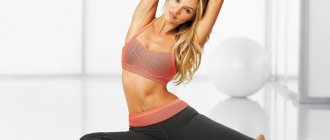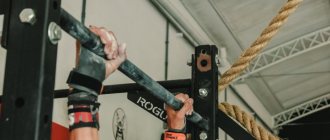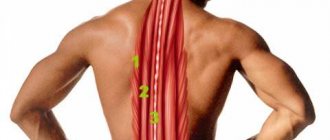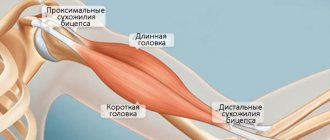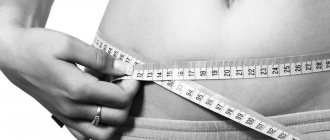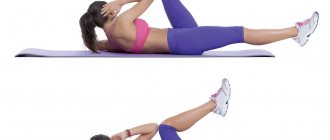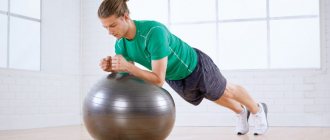Leg bending in a machine is isolated hamstring exercise, which works well in conjunction with exercises such as straight-legged dumbbell rows or leg extensions in a machine. Leg curls can also replace basic exercises on the back of the thigh if they cannot be performed, for example, due to minor back injuries. If there are injuries, then first you need to get permission from a doctor to practice. If everything is in order and you can play sports, then you need to spend a little time learning the technique of performing this exercise.
Using a Seated Leg Curl Machine
Why? It seems like it should help you get rid of fat on your outer and inner thighs. But alas, this is not so. Exercises that target only one part of the body will not help you lose weight.
What to replace it with? Lunges forward, backward and to the sides. These exercises will tone and make your entire body, including your hips, stronger. Plus, they're more practical and give you more endurance for everyday life (unlike a machine, according to Greg Justice, owner and founder of AYC Health & Fitness in Kansas City).
Contraindications
Before attempting an exercise, the athlete must ensure that it is suitable for them. The lying leg curl has the following limitations:
- There are athletes for whom the activity is not suitable due to anthropometric characteristics. They manage to do it only by resting their knees on the bench due to their short stature. In this case, we perform the exercise while standing.
- We recommend that you avoid doing leg curls while lying down in a machine if a person has recently injured their knee or if there is a risk of soft tissue inflammation due to overload.
- You should not exercise if you have a spasm of the piriformis muscle (with such ailment, after traction training, discomfort in the buttock begins to be transmitted throughout the entire limb). Then the athlete will raise the pelvis, but the hip will not feel the desired load.
- Trainers do not recommend performing manipulations after injuries to the ankle or Achilles tendon.
- The last contraindication is injury to the lumbar vertebra.
If you do not follow these recommendations, you can only make your health worse.
Ab exercises
Why? Simply because they are not that effective. Research has confirmed that abdominal exercises are less effective at stimulating muscle fibers than exercises aimed at stabilizing the spine (planks).
What to replace it with? Plank (read “Keeping the Plank: A Set of Simple and Effective Exercises for a Beautiful Body”).
By doing this exercise, you will use more core muscles than an ab crunch. In addition, doing a plank will prevent you from straining your back.
Iron Health
When performing certain exercises in bodybuilding, loads that are unusual for joints and ligaments may occur, which are excluded in ordinary life. In this regard, severe injuries may occur, calling into question further weight training.
What should I do? Almost all dangerous exercises have an equivalent replacement in the form of alternative exercises. They are safer and usually just as effective as their dangerous counterparts.
Let's look at the list of such exercises in more detail.
I. Leg extensions in the simulator
Target muscles : quadriceps
Danger of exercise : this exercise is one of the best movements for pumping up the quadriceps, but it also has negative aspects. Thus, in this exercise, movements are performed that are unusual for everyday life, which cause increased stress on the ligaments and tendons of the kneecap.
Alternative Substitute : Single Leg Squats
This exercise, like extensions, provides a good load on the quadriceps. By alternately performing one and the other leg, optimal weight is provided, sufficient for training the quadriceps.
II. Rotation of the body in the simulator
Target muscles : obliques
Danger of the exercise : during such rotations, the pelvis moves in the opposite direction from the chest, which is very dangerous for the lumbar spine. By the way, the effectiveness of this exercise is very doubtful.
Alternative replacement : twisting on the upper block
This exercise is performed as follows: stand with your right side to the upper block and take the rope handle, statically tense the muscles of the lower back and core, while holding the handle with both hands. Pull the handle to the side and down as if you were trying to reach your left knee. Perform 12-15 repetitions on each side of the body.
III. Seated barbell press (from behind the head)
Target muscles : muscles of the shoulder girdle
Danger of exercise : isolated lifting of weights overhead is not entirely familiar to ligaments and joints. Typically, such lifts are anatomically oriented to involve other accessory muscles, but this does not happen. As a result, such presses can lead to overstrain of the shoulder joints and their inflammation.
Alternative substitution : throwing a heavy ball (medicine ball)
Go to the wall and throw the ball so that it hits the wall at a distance of 1 meter above your height. Catch the ball in a slight squat position, using your hips to absorb the load on your shoulders. This exercise will reduce the harmful load on the shoulder joints.
IV. Barbell Squats at Smith
Target muscles : legs
Danger of the exercise : fixing the trajectory of the barbell leads to overstrain of the knee joints, shoulders and lower back.
Alternative Substitute : Barbell Squats
This exercise will force you to move along an arc trajectory (and not in a straight line, as in Smith), reducing the negative load on the ligamentous and joint apparatus. Contrary to misconception, classic squats, being a heavier exercise, are safer for the lower back.
V. Leg press
Target muscles : quadriceps, calf muscles
Danger of the exercise : leg presses force the back to switch off from the work, so this exercise involves bending the back. At the same time, the muscles that ensure stability are excluded from the work. Even a slight jerk or deviation from technique can result in injury.
Alternative Substitute : Deep Squats
This exercise is performed as follows: place your feet slightly wider than your shoulders and perform as deep squats as possible. Perform 15-20 repetitions in this manner. As you master the technique, increase the number of working repetitions.
VI. Crunches on a Roman bench (chair)
Target muscles : abs, hip flexors
Danger of the exercise : despite the widespread use of this exercise, it is very dangerous and requires strict adherence to a technique that few people know. The danger of the exercise is that the lower back is loaded at the moment when it is in a rounded state. And this can be very dangerous, especially when using additional weights in the form of a pancake.
Alternative replacement : front strap
Stand on your elbows, straightening your body and hips “in line.” Pull your stomach in and statically tighten your gluteal muscles. Hold this position for 30 seconds.
VII. Top link on block
Target muscles : back muscles
Danger of the exercise : despite the imaginary ease and clarity of the exercise, it still requires a special technique of execution, which few people follow. The most common mistake beginners make is choosing too much weight. As a result, due to insufficient flexibility, severe injuries to the shoulder joints develop.
Alternative replacement : low bar pull-ups
Place the bar at waist height on the Smith machine. Grab it with a wide grip and take a position underneath it, hanging with your body and legs straight in a line. Perform pull-ups by spreading your elbows out to the sides and touching the bar with your lower chest area.
VIII. Reduction of arms in the simulator (“Butterfly”)
Target muscles : chest
Danger of the exercise : This exercise machine places the shoulder joints in an unstable position, which increases the risk of injury. Among other things, this exercise is not as effective as it seems at first glance.
Alternative replacement : push-ups
Bends to the side with a gymnastic stick or turns
Why? You may think that this way you are strengthening your core muscles or burning fat, but in reality you are not. In reality, when you work with a weight behind your neck and start twisting and turning the barbell, there isn't that much resistance. It's better to train against gravity.
What to replace it with? Side plank static or dynamic. This is a gravity-resistance exercise that effectively works your muscles.
What muscles are involved?
It is not surprising that this type of exercise machine is very popular among those who want to achieve really strong legs. While performing this exercise, if the correct technique is followed, almost all muscle groups are well worked out. The main load for lifting weights falls on the quadriceps and gluteal muscles, which leads to their intensive development. In addition, due to the fact that the weight is supported by the feet, the calves are also included in the work, which gives the most complete workout.
Leg bending on a machine from a lying position
Why? When you do exercises lying down, your spine is not involved, and you train the least amount of muscles. In addition, such an exercise turns out to be useless in real life: it is unlikely that anyone can name at least one reason why we need to bend our legs from a lying position.
What to replace it with? Raising the leg back from a standing position. This exercise activates the posterior part of your body, which includes your lower back, glutes, thighs, and calves, while also working your core muscles to maintain balance. Most importantly, this exercise develops the flexibility and balance skills necessary in everyday life.
Execution technique
Initial position
- Much depends on the height of the athlete and the length of the bench of the machine, as well as on the position of the fixation cushion. It must be installed so that it is possible to start with “soft”, slightly bent knees, and so that the athlete can bring his heels to his buttocks without any problems;
- The support cushion should not roll onto the heel itself during movement, but should be located on the bend, in the area of the Achilles tendon;
- The weight is set depending on the experience and strength of the athlete, there is no need to set too much weight, this is not a movement to develop strength;
- To take the starting position, you need to lie face down on the bench and rest your feet on the exercise pad.
Movement
- It is enough to bend your knees so that your heels begin to move towards your buttocks, and bend your knees;
- The movement continues exactly until the heels rest on the buttocks, or until the volume of the hips and legs allows;
- At the peak of the amplitude, the biceps of the thigh are slightly tensed, and then the thigh is extended and the legs are lowered;
- The number of repetitions of the movement is from 10 to 20 or more, if necessary according to the athlete's training plan.
Attention
- Some lifters allow their hamstrings to rest during this exercise by extending their legs fully and popping their knees into a position that is typical for a deadlift. It is necessary to ensure that the tiles of the safety stops do not touch each other and that the exercise is performed with almost constant tone of the working muscle;
- The knee can and should be protected from injury if the athlete does not rest his kneecap on the pad of the exercise machine;
- There is no need to create a “swing” of the pelvis, an inertial movement that will contribute to hyperextension of the knee ligaments and injuries, and also take part of the load from the hamstring biceps;
- It is not recommended to actively move your ankles along and across the pad of the exercise machine. Such movements will contribute to Achilles tendon injuries;
- Activation of the hamstrings is possible without unnecessary movements, which many make, as if straightening their knees. This version of the exercise is quite traumatic for the ligaments, so it is not necessary to perform it.
It's the LYING LEG CURL, baby!
Recommendations
- Watch your body position on the bench. It is most convenient to bend your legs if the hip joint is on the “high” part of the bench, that is, on the place where it is highest;
- Do not push the pillow with your heels, and do not fidget on the bench;
- Try not to push your knees into hyperextension;
- Don’t struggle with weights, and don’t overload yourself with isolation exercises in general;
- If you use drop sets, make sure that the technique does not change as you get tired, and that your knees do not rest on the bench;
- Do not “drop” the weight so that the tiles of the machine hit each other;
- Do not lift the weight with your back, avoid excessively engaging the buttocks, this is not an exercise for them
Dumbbell arm extension
Why? You won't be able to lift a heavy enough weight and still maintain proper arm position. Usually the shoulder begins to sag and the effectiveness of the exercise is lost.
What to replace it with? “Skull crusher”, or French bench press for triceps. The exercise will allow you to pump up your triceps muscles without losing the shape of your arms. The skull crusher position allows your elbows to remain where they should be and thus receive the necessary load.
Preparing for the exercise
On professional websites and in printed publications you can read how to prepare the body for such practices. Some people do stretching and warm-up exercises. In fact, such isolation training can be performed immediately after a thorough warm-up. By this minute, enough blood flows into the limbs and they become flexible.
If this exercise comes first in your training plan, then it is better to include a cardio warm-up with a stepper and start with a light weight. Most training machines have an adjustable pad on which to place emphasis. It needs to be adjusted carefully so that the calf muscles are comfortable. Otherwise, this exercise will not bring any benefit.
Proper execution
There is a special technique for bending legs in a lying position:
- No need to lift your pelvis. This is fraught with bruising of the lower back if the angle in the ligaments is violated. Typically, when lifting the body significantly, it makes sense to reduce tension and remove excess mass.
- Do not quickly push the exercise pad up and increase the mass through inertia. If you are not properly prepared, you can damage your knee ligaments if you work unbalanced.
- Try to bend your legs while lying down and straighten your limbs slowly, remaining briefly at the point of greatest contraction. This allows you to get the load and avoid injury.
- If you cannot perform the exercise slowly, concentrating your efforts on exhalation, it is better to reduce the load.
- Do not rest your kneecap on the bench.
The feet are placed parallel to each other, and the toes remain motionless. It’s good if you can maintain the same distance between your knees during execution.
Errors
At runtime you cannot:
- Place your knees on the bench.
- Push the load jerkily.
- Move at a reduced amplitude (if this is not provided for in the plans).
- Lift your pelvis up.
It is important to monitor the correct execution of the exercises.
Calf raises while standing on the machine
Why? The machine puts all the weight on your shoulders, which puts stress first on your back and then on your calf muscles.
What to replace it with? Sprint. It's better than regular running for developing your calves. Sprinting activates more fast-twitch muscle fibers, which are responsible for muscle growth and development.
If sprinting isn't for you, try calf raises using your body weight. If this seems too easy for you, then try doing this exercise on one leg.
Using weights in training
When it comes to using additional weight for sports, images of barbells and dumbbells immediately appear in your head. Many people forget about the existence of such equipment as weights. Their use allows you to create a load on the muscles in the legs that is close to reality.
A weighting device is most often a special belt with balanced weighting inserts - it is secured in the area of the ankle joint. The choice is quite wide. You can purchase products with a pre-selected weight and use only that, or opt for kit models. The second option will cost a little more, but will allow you to increase the load.
This type of weighting is used in fitness training. For example, an extremely popular exercise is “donkey kicks left/right.” The athlete's task is as follows. You need to get on all fours, arms bent at the elbows and lying along the body. Then the athlete lifts one leg at a time, straightening it. It is necessary that your back is in a straight line with your leg raised. This version of the exercise develops the thighs, calves and buttocks well.
Weights are often used to perform steps. That is, a low bench or a special podium is placed. The athlete’s task is to alternately step on the instep with one foot and bend the other at the knee. It is important to monitor your breathing - the knee rises as you exhale.
